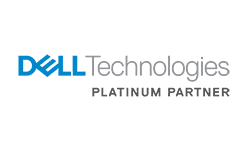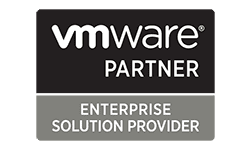Best Practices for Systems Modernization: Future-Proofing Your IT Infrastructure
Essential Best Practices for Successful Systems Modernization: Upgrade Legacy Systems, Embrace Cloud Solutions, and Enhance Security for Future Growth
Kelsey Young, Copywriter and Media Specialist
6 Min Read

Businesses that want to stay competitive must keep pace with technological advancements. This is where systems modernization comes into play. Systems modernization is the process of updating legacy IT systems to ensure they are efficient, secure, and capable of integrating with newer technologies. But modernization can be complex, and a haphazard approach can do more harm than good. This article will explore best practices that help ensure a smooth and effective transition, ultimately leading to improved operations and enhanced business agility.
Understanding the Importance of Systems Modernization
These older software applications and hardware systems have served businesses well for years, sometimes even decades. However, as the technology landscape shifts, these systems can become cumbersome, slow, and incompatible with newer tools and platforms. This can create a bottleneck for growth and leave businesses vulnerable to security risks. The objective of systems modernization is to transform these outdated assets into a robust, flexible, and future-ready infrastructure.
Modernization enables companies to take advantage of cloud computing, enhance security measures, and ensure seamless data integration across different systems. By following best practices, businesses can execute a modernization strategy that minimizes disruption and maximizes benefits.

Start with a Thorough Assessment and Planning
The first step toward successful systems modernization is to evaluate existing infrastructure and plan accordingly. A well-executed plan will serve as the foundation for the entire project. Here’s how to do it:
- Evaluate Legacy Systems: Analyze your current systems to understand their strengths, weaknesses, and pain points. Look for performance bottlenecks, security vulnerabilities, high maintenance costs, and integration challenges. This assessment will provide insights into what needs to be upgraded, replaced, or re-engineered.
- Define Clear Goals: Establish the objectives of modernization. Is the primary goal to improve performance, reduce operational costs, enhance security, or enable better scalability? Defining goals helps you focus on outcomes that will benefit the business in the long term.
- Develop a Phased Roadmap: Create a detailed plan that includes a timeline, resource allocation, and potential risks for each phase of the modernization journey. This roadmap acts as a guide to ensure that the modernization effort proceeds in a structured manner, reducing the risk of unexpected disruptions.

Take an Incremental Approach to Modernization
Attempting to overhaul an entire IT infrastructure in one go can be risky and disruptive. Instead, an incremental approach allows businesses to modernize in manageable steps, ensuring continuity and minimizing risk.
- Start Small: Focus on modernizing less critical systems first. For example, update a minor application or a non-critical business function before taking on core systems. This provides an opportunity to test new technologies and processes before applying them to more significant areas of the business.
- Modularize the System: Many legacy systems are monolithic, meaning that they are tightly integrated and difficult to update. Shifting to a modular or microservices architecture allows individual components to be modernized independently. This makes the overall system more agile and flexible, as updates to one module don’t require a complete system overhaul.

Embrace Cloud Solutions for Flexibility and Scalability
Cloud computing has become a key driver of digital transformation, offering businesses unparalleled flexibility and scalability. When modernizing, adopting a cloud-first strategy can be a game-changer.
- Choose the Right Cloud Model: Evaluate the different types of cloud solutions—SaaS (Software as a Service), PaaS (Platform as a Service), and IaaS (Infrastructure as a Service). Each has its own benefits and use cases. For example, SaaS might be ideal for productivity tools, while IaaS can provide scalable server resources for custom applications.
- Hybrid and Multi-Cloud Solutions: For many businesses, a hybrid cloud approach, which combines on-premises resources with cloud services, is ideal. It offers the best of both worlds: the ability to keep sensitive data on-premises while leveraging the scalability of cloud solutions for other functions. A multi-cloud strategy, using services from multiple cloud providers, can further enhance resilience and prevent vendor lock-in.

Secure Your Modernization Process
Security should be a top priority during systems modernization, especially as data moves from legacy systems to modern platforms. A failure to secure new systems can lead to breaches, data loss, and compliance issues.
- Data Migration Best Practices: Data migration is a critical aspect of systems modernization. Use ETL (Extract, Transform, Load) processes to ensure that data is cleaned, transformed, and verified before it is transferred to the new system. This helps maintain data integrity and prevents disruptions during migration.
- Strengthen Security Protocols: Update security protocols to match the new infrastructure. Implement encryption, multi-factor authentication (MFA), and role-based access controls to secure data. Additionally, ensure compliance with industry regulations like GDPR, HIPAA, or other standards relevant to your industry.

Leverage API and Middleware for Seamless Integration
One of the key challenges in systems modernization is ensuring that legacy systems can integrate with new technologies. APIs and middleware are essential tools for achieving this.
- Adopt API-Driven Architecture: Use APIs (Application Programming Interfaces) to facilitate communication between legacy systems and modern applications. APIs can serve as a bridge during the transition period, allowing different systems to interact seamlessly.
- Utilize Middleware: Middleware acts as a layer between older and newer systems, allowing data to flow between them without extensive redevelopment. It can help smooth the integration process and reduce the complexity of dealing with disparate systems.

Prioritize User Experience (UX) During the Transition
Modernization isn’t just about technology—it’s about the people who use it. A system that meets user needs is more likely to be adopted successfully, leading to a smoother transition.
- Engage Users Early: Gather feedback from end-users during the planning stage to understand their challenges and expectations. By involving users early on, you can ensure the new system is designed with their needs in mind.
- Test User Interfaces: As you develop new systems, conduct user testing to ensure that interfaces are intuitive and align with users’ workflows. This minimizes the learning curve and improves adoption rates.

Automate Processes to Enhance Efficiency
Automation can greatly accelerate the modernization process, from development to deployment.
- Automate Testing: Automated testing tools can validate the performance, compatibility, and security of new systems. This ensures that issues are identified and addressed before deployment, reducing the risk of bugs and system downtime.
- Adopt DevOps and CI/CD: DevOps practices and Continuous Integration/Continuous Deployment (CI/CD) pipelines streamline the software development lifecycle, making it easier to deploy updates, patches, and new features in the modernized system.

Choose a Technology Stack with an Eye Toward the Future
When selecting the technology stack for modernization, it’s crucial to consider not just current needs but also future growth.
- Future-Proofing Your Technology: Avoid falling for trendy solutions that may lack long-term support. Opt for technologies that have a proven track record and a vibrant community or vendor support. This ensures that your new systems will remain viable for years to come.
- Manage Vendor Relationships: Work closely with vendors that have a solid reputation and offer ongoing support. This is especially important if you are leveraging third-party tools or cloud services that will be integral to your business processes.

Embrace Change Management for a Smooth Transition
Managing the human side of change is as important as managing the technical aspects. A well-executed change management plan can help minimize disruption and resistance to new systems.
- Communicate Clearly: Keep stakeholders informed throughout the process to ensure that everyone understands the benefits and the rationale behind the modernization efforts. Regular updates help align technical teams with business objectives.
- Train Your Staff: As new systems come online, provide comprehensive training to employees. This helps them understand the new tools and workflows, ensuring that they can make the most of the new capabilities.

Monitor and Optimize for Continuous Improvement
Systems modernization doesn’t end when new systems are deployed. Continuous monitoring and optimization are essential to ensure long-term success.
- Monitor Performance: Use tools like Application Performance Management (APM) to track the performance of the new systems. This helps identify bottlenecks, inefficiencies, or areas that need further improvement.
- Iterate and Refine: Use feedback and performance data to make incremental updates and enhancements. This allows your modernized systems to adapt to evolving business needs without the need for major disruptions down the line.
Final Thoughts
Systems modernization is a complex but crucial process for businesses looking to stay competitive. By following these best practices—thorough planning, incremental updates, cloud adoption, strong security, and a focus on user experience—companies can ensure a successful transformation. This not only future-proofs their operations but also enables them to leverage the full potential of modern technologies, creating a robust foundation for growth and innovation. Embracing systems modernization today can empower your business to thrive in tomorrow’s digital economy.




